UK female soldiers: Hurdles remain for combat action
- Published
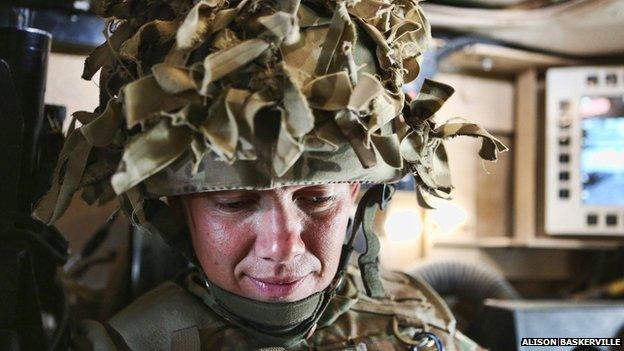
The MoD's review calls for more research to be done on the physical impact of front line duty for women
Women have already broken down barriers in the British armed forces.
They're currently flying combat missions over Iraq with the RAF. Last year the Royal Navy lifted its ban on women in submarines.
In Afghanistan they've already served on the front line too, albeit in support roles as medics, bomb disposal experts and intelligence officers.
But women are still prohibited from joining the infantry or the armoured corps.
In May, former Defence Secretary Philip Hammond ordered a review on the ban on women serving in "close combat".
He said he wanted to send a signal that the military "is open" to all who can meet the standards. That review has not closed the door on women serving on the front line.
But it says more research will be needed to assess whether woman can meet the harsh physical demands of front line units.
Danish equality
The Nordic countries have been at the vanguard of opening up all roles in the military to women.
In Denmark they've been allowed to serve alongside men in the infantry since 1988.
We witnessed some of them in action on a cold December day on a major military exercise. It involved dozens of tanks, and 800 troops - mostly men, but a few women too.
On exercise the female soldiers sleep and eat out in the open alongside the men. They carry the same equipment and weapons. They've had to meet the same physical tests as the men. Standards have not been lowered. But they're still in the minority.
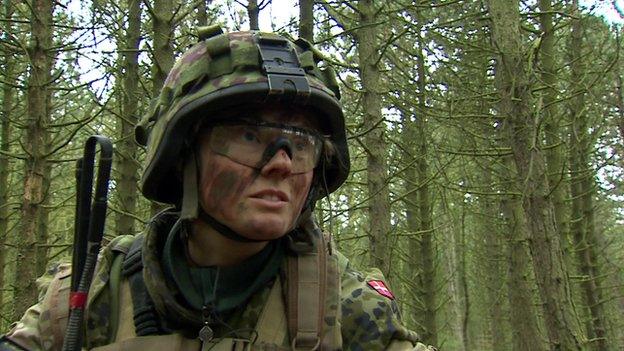
Lance Corporal Meda Peterson has carried out a combat role for the Danish army
Lance Corporal Meda Peterson has already experienced combat in Afghanistan. She served in Helmand and went out on patrol with British troops as the only woman.
On this exercise she was helping lead a platoon of men. As her unit cleared out an enemy position in a forest, she told me that "we don't think about men and women. In Denmark we think professionally".
She says "there is no limit" to what women in the Danish infantry can do.
Back in Britain, some in the Army have questioned whether women have the "killer instinct".
'Old fashioned'
Richard Kemp, a former colonel in the Army, has argued that a woman "simply does not fit into this testosterone charged band of brothers".
He argues that infantry close combat demands ferocity, aggression and killer instinct, characteristics which he believes are "far more common in men than women".
But that's not borne out by the Danish soldiers we spoke to.
Sergeant Kennet Karlson acknowledges there are physical differences between men and women, but he says "mentally they're just the same". He describes the bar on women joining infantry units in other countries as "quite old fashioned".
Brigadier Nicky Moffat, until recently the most senior female officer serving in the British army, calls it "sexism dressed up as concern".
One of those concerns is whether the inclusion of women will undermine cohesion; that somehow their very presence could harm a unit's ability to fight; that it would no longer be "a band of brothers" .
A previous study by the Ministry of Defence (MoD) stated there was no evidence that women would perform less well in combat roles "but gender may influence team cohesion and consequently affect operational effectiveness".
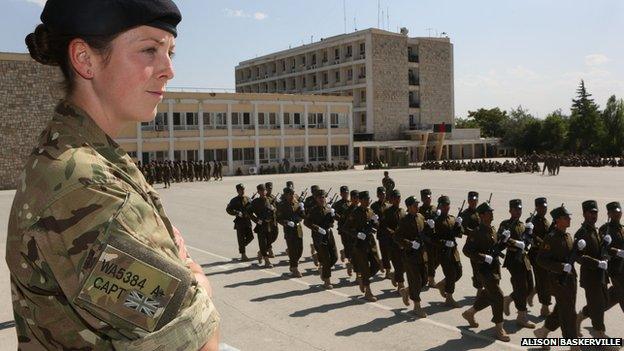
British women have already served in places like Afghanistan, in support roles
Back in Denmark though, Captain Peter Sondergard questions whether that's really the case.
He commanded troops in Afghanistan which included women.
He says: "There is no doubt that when a group of young males bond, they fart a lot and talk about sex".
But he adds: "Soon you will find the ones who have the foulest mouths in their section will be the female soldiers".
Senior British army officers too now accept that fears about undermining cohesion are not a reason to maintain the ban.
Physical test
It's the physical demands of serving in close combat, particularly in the infantry that remain the biggest barrier.
This latest review by the MoD has concluded more research needs to be done to assess the impact on a woman's body, not least the effect of carrying heavy weights, often the equivalent of 10 stone (63kg) for long periods of time, out on patrol in the harshest conditions.
Plenty of male soldiers have found that a challenge in Afghanistan.
The MoD will also be wary for the potential of compensation claims if there are long-term injuries.
Last year it paid three female RAF recruits £100,000 each after they suffered injuries caused by marching in step with their male colleagues.
Britain is looking to the United States to see how it's integrating women into close combat units.
The Pentagon officially lifted the ban last year, but is still testing how the theory works out in practice.
Challenges have already emerged. Of 240 women who've volunteered to do the US Marine Corps basic infantry course, 45% have passed. In contrast, 95% of men graduated.
Many women struggled to meet one of the basic strength tests of doing three consecutive pull ups.
About 30 countries already allow women to serve in close combat units.
With so many allies having already lifted their ban it will be increasingly hard for the British Army to resist the change.
Nor does the review close the door on women serving in close combat units - it is now seriously being considered.
Back in Denmark, Capt Peter Sondergard believes it's inevitable that Britain will soon follow his country's lead.
After all, he says, "it is the politically-correct thing to do".
- Published19 December 2014
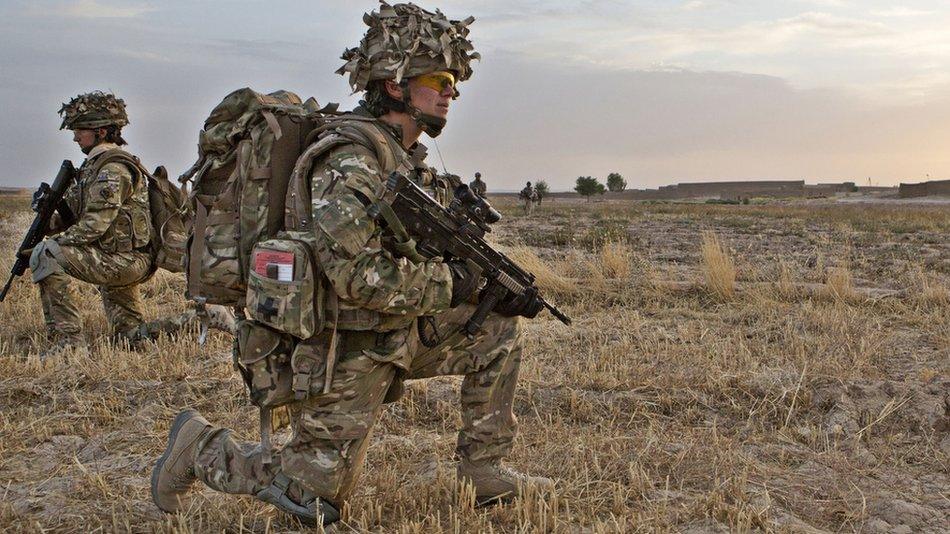
- Published9 May 2014
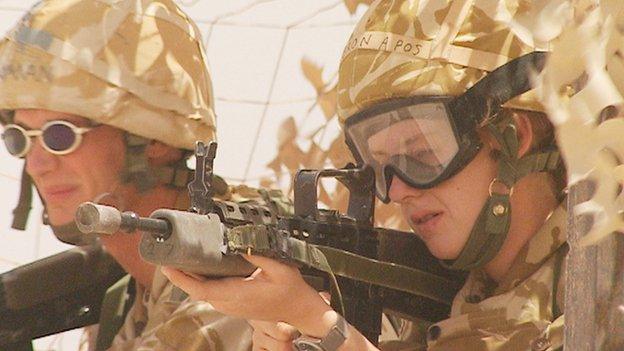
- Published5 May 2014
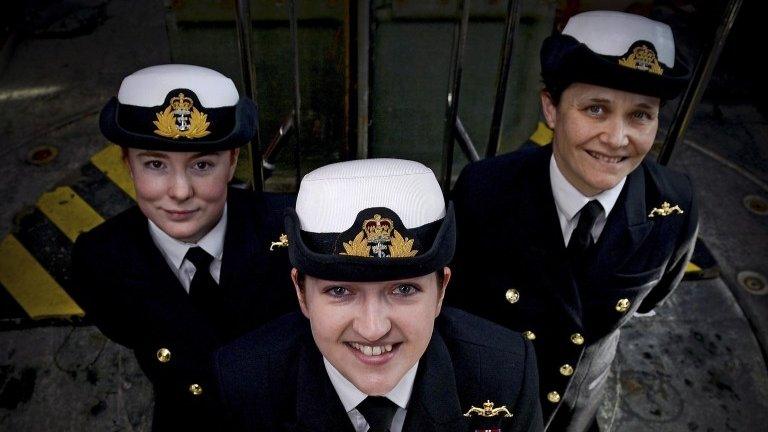
- Published23 August 2013
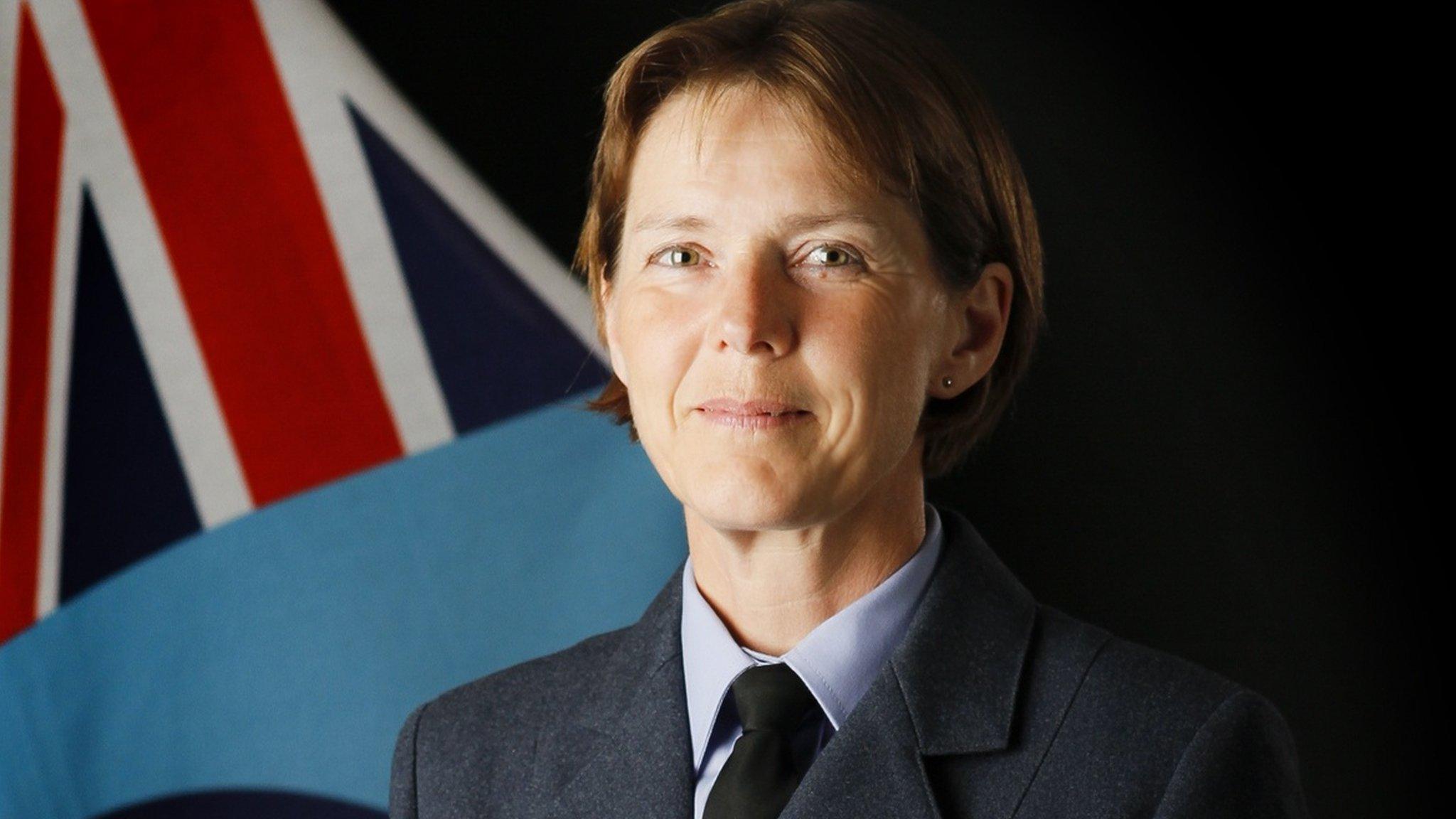
- Published4 March 2013